Gorging on Gaziantep’s Goodies
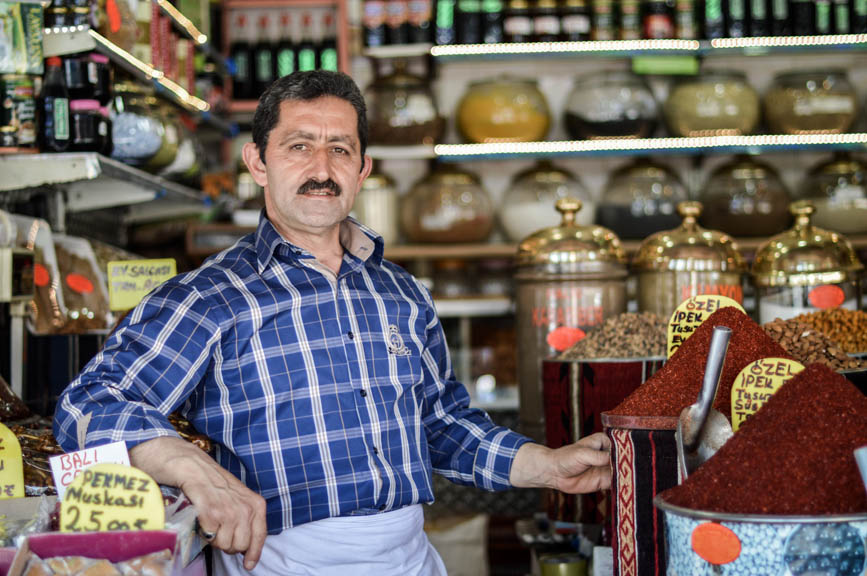
“People from Istanbul think that Gaziantep cuisine consists of several kinds of kebabs, bulgur wheat, baklava and pistachio nuts. What a pity! What ignorance! These are the tips of the iceberg…Gaziantep, the meeting point of cultures since ancient times, is the richest and most developed city of the region in terms of food culture. An example of this great wealth is the 42 different kinds of meatballs made from bulgur wheat. But, it is not possible to be acquainted with Gaziantep cuisine only by reading or from what others say, or even through a few exmaples. Rather you have to live in the city for a long time and test the countless dishes that are steeped in tradition and painstakingly and lovingly prepared by the skilled housewives to be presented on the dinner table. A gourmand from Istanbul does not have enough lifetimes for that…“
Ahmet Örs
Oh Gaziantep I love you so. You are my kind of city, fast but relaxed and teeming with food.
No culinary journey in Turkey would be complete without a stop in the city previously known as Antep. We only spent a few days in this epicurean city, not enough lifetimes, but it conquered our hearts and bellies; tailor-made for the foodies in us. It was probably good news for our girths that we did not stay longer. Life in the city revolves around food, food and more food. In our mission to try everything the town was cooking up, I considered skipping the unexciting breakfast at the hotel to leave more room for the countless street food on offer, but even that proved ineffective – it is impossible to walk down the narrow alleyways of Gazinatep’s bazaar without being literally stuffed with food. Whenever we stopped to fulfil our curiosity, poking our heads into a spice and nut shop to ask questions or chat with locals we were given free food. Refusing the offer was not an option as pistachios, walnuts, strawberries and tarhana chips were literally popped into my mouth by shop keepers. (Tarhana is used as a soup base for many turkish çorbas (soups), herbs, spices and yoghurt are blended before being dried into slabs ready to be dissolved in hot broth.) Çay evi (teahouse) owners refused payment for tea. We walked through town suddenly full without ever having opened our wallets. So far in Turkey we have always been met with kindness, generosity and hospitality, but this was on another level.
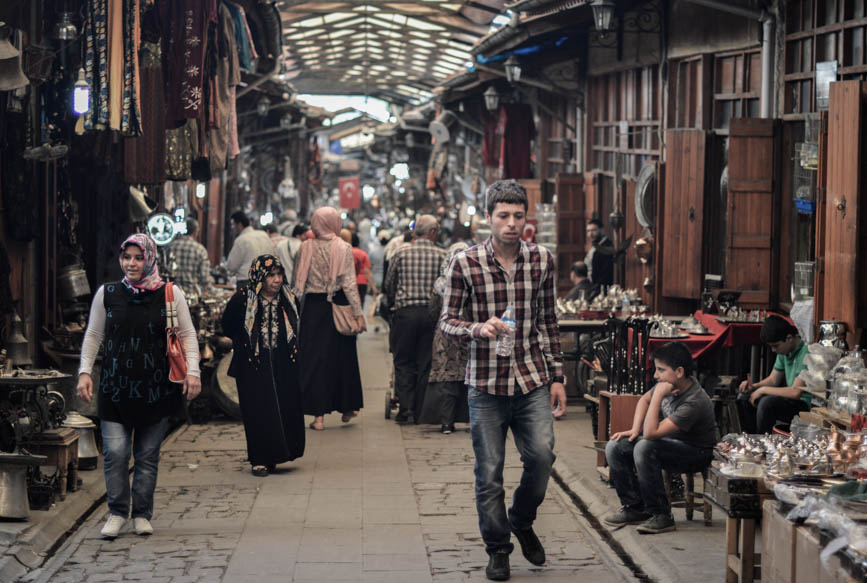
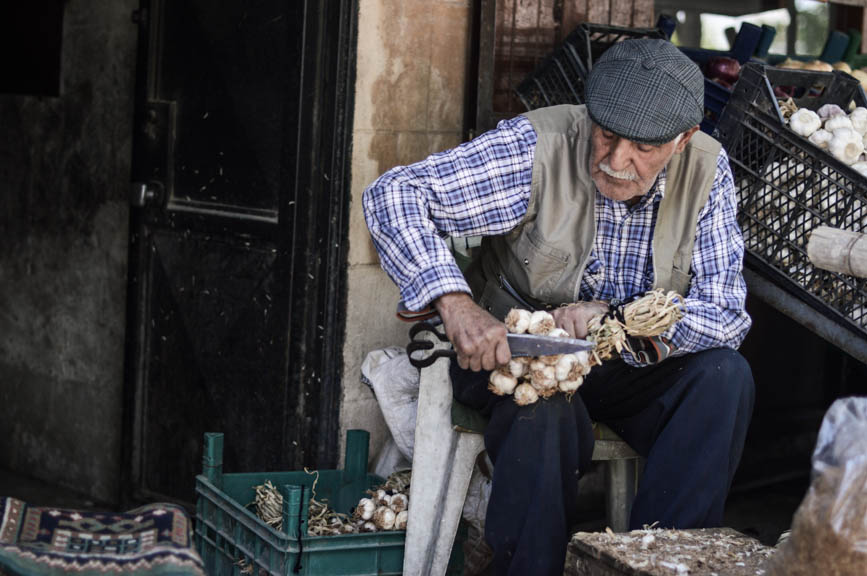
Supposedly one of the oldest continuously inhabited cities, Gaziantep brings us closer to the Syrian and Iraqi border and has a large kurdish population like much of southeastern Turkey where about 8 million Kurds reside. In our first hour of walking around town we encounter our first taste of kurdish hospitality that we experience all the way throughout the east. At the tourist office to pick up a city map, we meet Davut and Mazlum. Two engineering students who speak perfect english, they offer to take us on a walk of their neighbourhood on their day off. We walk briskly following our new friends through the back streets up to the city’s kale (castle) where the bazaar begins. The first time round I soak it all in, the fragrant herbs, the meaty kebab smoke, the flames bursting onto the pavement from artisans working on their copper creations that the town is known for. Walking and talking we learn about our local companions, both proud Kurds who were previously involved in the Kurdish student movement. They give us a quick introduction to Kurdish politics and history. Though no longer as active as they used to be, Davut and Mazlum tell us of how they would be discouraged from organising peaceful protests or cultural activities with the simple police comment of – “why don’t you just enjoy girls in university?”.
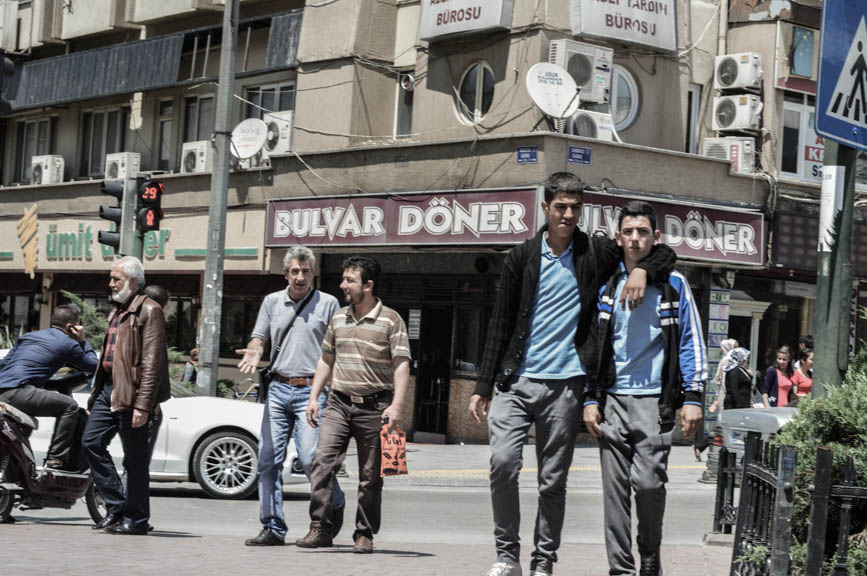
Kurdish independence movements have long been suppressed in Turkey and neighbouring countries where large parts of the population are Kurdish. During the formation of the Republic of Turkey in 1923, unity of one country was given high priority, leading to Kurdish regions being placed under martial law, outlawing the use of Kurdish language, dress and folklore. Since 1991, Kurdish language prohibition has been relaxed, in an effort to establish more civic rights and since 2012 it has become possible to take it as an elective subject in public schools. Some families still speak kurdish in their homes, but a significant amount is being lost among the young. Davut now teaches kurdish classes at the cultural institute in an attempt to preserve his culture. We head to the Papyrus cafe hidden among the old Armenian quarter of Bey. Under the leafy canopy in the old stone courtyard, we sip on çay and talk about music over some suçuk that Davut has brought along. Suçuk (soo-juke) also meaning sausages is a cousin of lokum. If I was obsessed with the lokum from Safranbolu, you can count me as another devoted fan of the Gaziantep suçuk, I am still regretting that we did not buy some for the road. Suçuk are, take-a-guess, sausage-shaped lokum without the powdered sugar or coconut flakes topping. They are chewy and mild with a touch less sugar in them, replaced instead with more nuts, pistachios, walnuts or pomegranate juice and yoghurt. Yum yum.
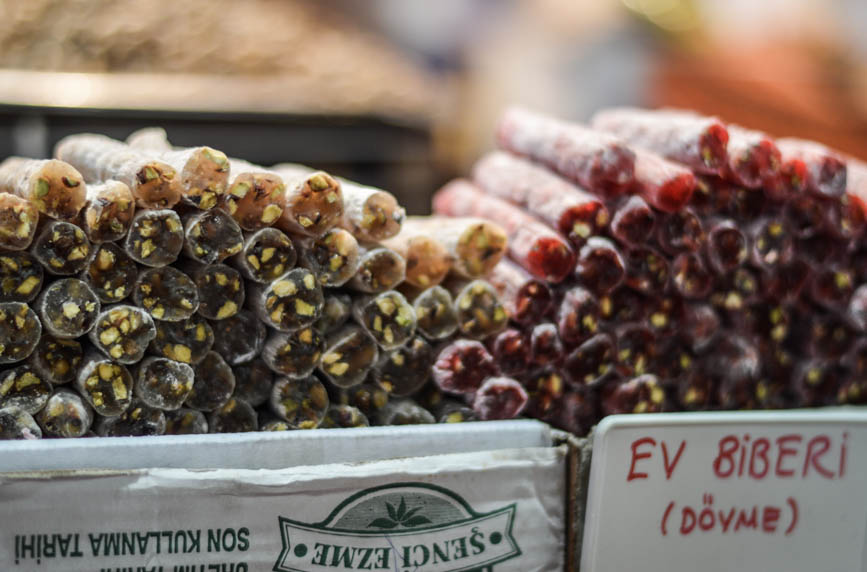
The time comes to leave our friends, Davut is off to study for an exam and Mazlum on his way to a flamenco concert in Ankara, a modern lover of Andalucia and its music after having visited Spain during his Erasmus student exchange days. Once again, they do not let us pay for anything.
Left to our own devices, we walk back to the bazaar and use our noses to track down the little corner kebab place we passed on our initial walk. Equipped with a few stools and street tables our little kebab nook is full of customers, always a good sign. Our neighbours wolf down their kebabs much like Italians down their espressos at the bar counter, hot and fast. Almost always this is accompanied by a cold yoghurt ayran to wash it all down. Before they depart, they take it upon themselves to make sure we add the right spices to our own tavuk (chicken) kebab, pointing to the bowls of burgundy sumac, red chillies and sandy cumin. Delicious.
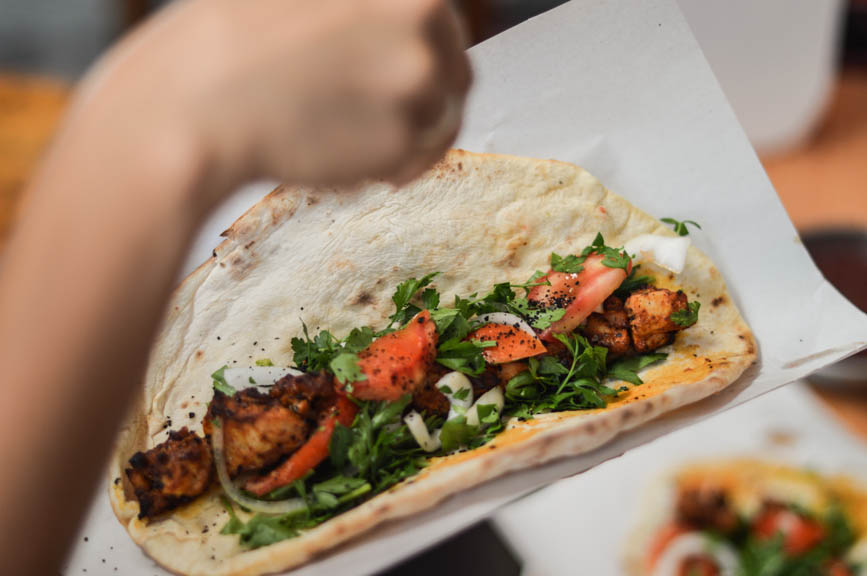
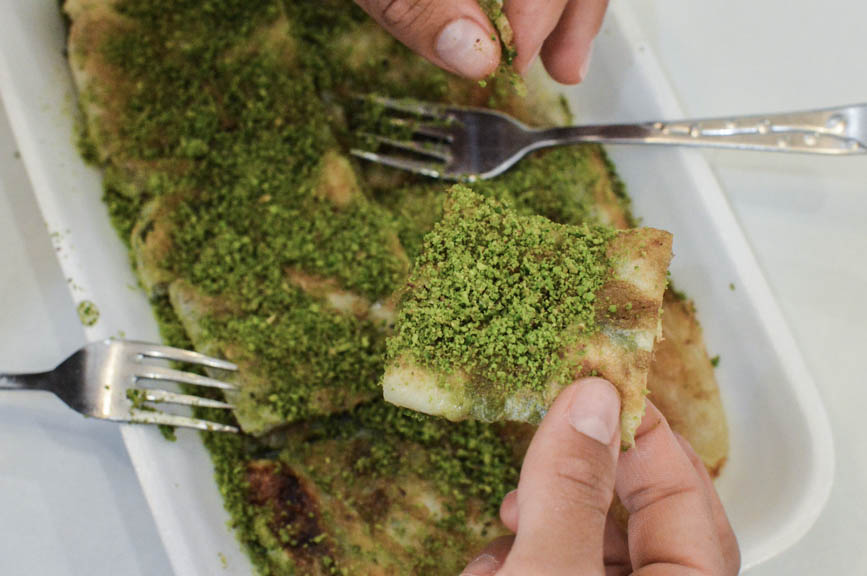
Gaziantep is home to the Antep fıstık, meaning Antep nut, the turkish name for pistachios. The gorgeous purple tinged slender green nuts are piled high in baskets along the streets and are found scattered in almost every sweet dish from katmer to butter biscuits to künefe to kadayıfı. The city is the pistachio capital of Turkey with a regional production of about 45000 metric tonnes in 2013 alone.
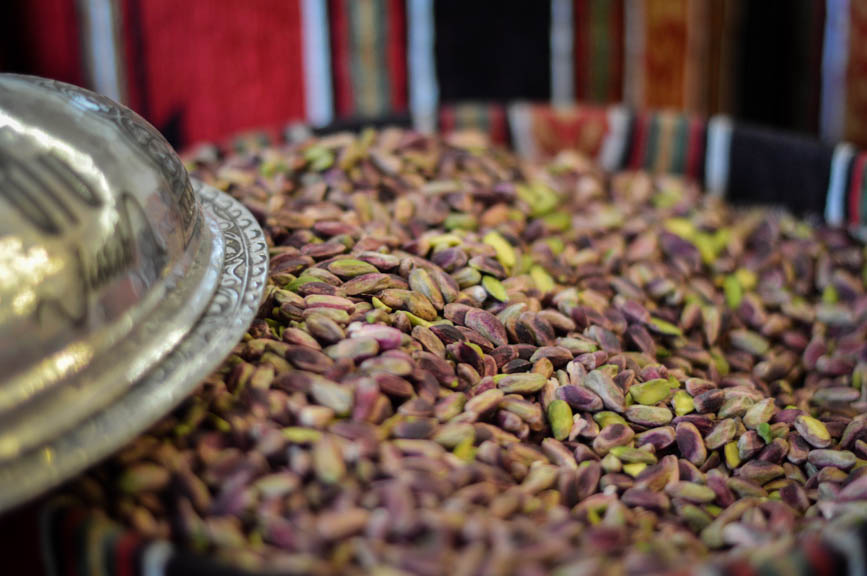
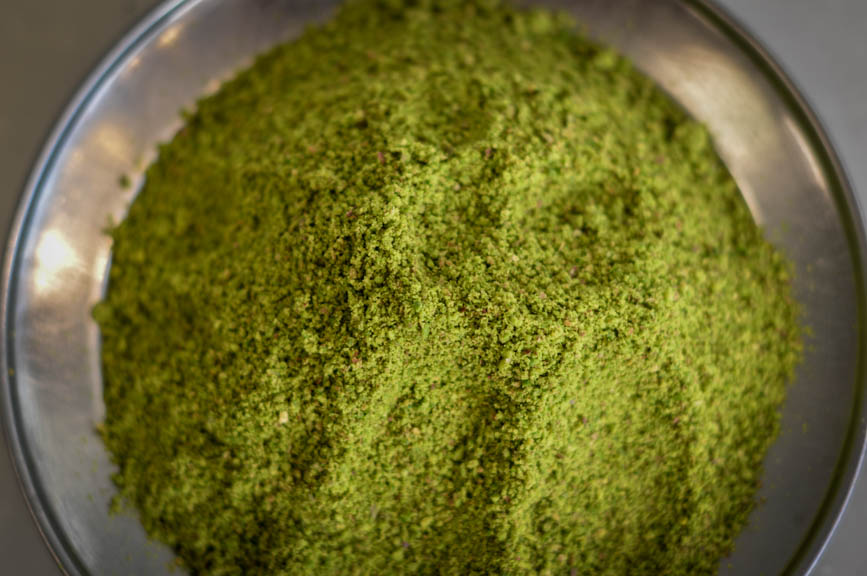
A must try dessert in town is katmer. Katmer is often similar to gözleme, a turkish crepe shaped like a large mexican tortilla, filled with a variety of savoury fillings such as spinach, cheese or meat. The Gaziantep katmer is sweet, a mini-caloric bomb, crispy bread-like pastry soaked in some honey and wrapped around kaymak (turkish clotted cream) mixed with ground pistachios and topped with another sprinkle of the green stuff. The kaymak used in katmer is referred to as “kaymağın, kaymağı” – the “creme de la creme”. We order one to share and are presented with a double-decker serving, creamy and decadent, I find it hard to believe how one person alone could finish a single portion! Be warned, never go alone for fresh katmer in Gaziantep, unless you are planning on running a marathon.
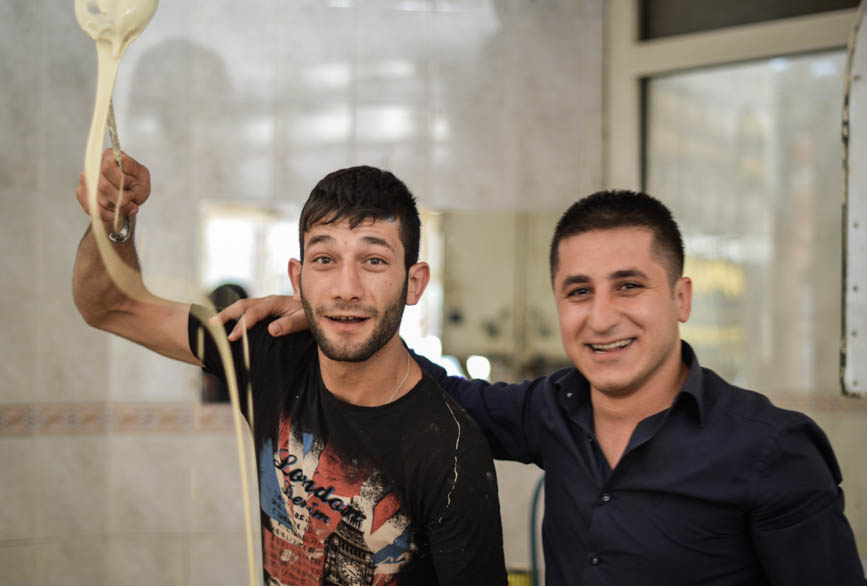
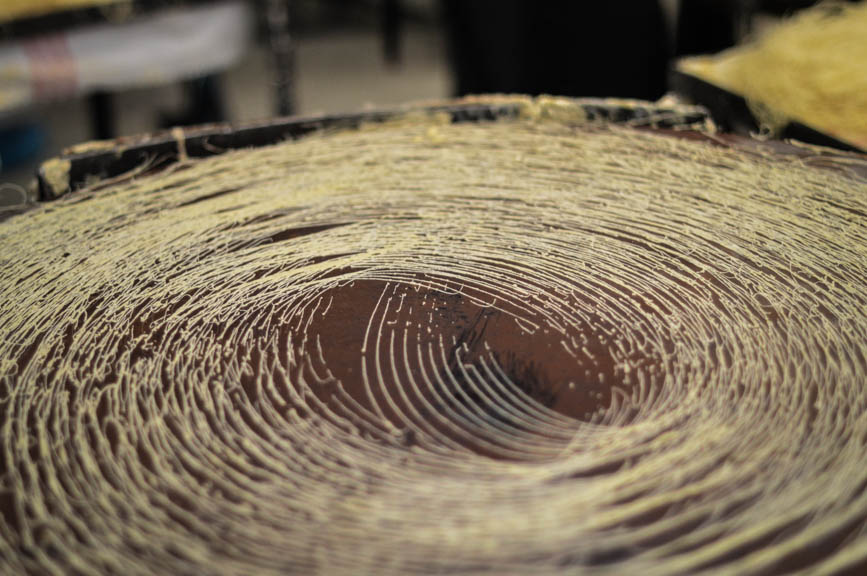
If your sweet tooth is still not satisfied, there is always more. The other Gaziantep obsession is fıstık baklava. People flock to the city for the green tinged flaky pastry squares, golden cubes of crunch, crisp and sticky honey syrup all in one. This is not a tourist gimmick, locals seem to be just as in love with it as the city visibly boasts the highest concentration of baklava shops in Turkey. The Gaziantep baklava was the first turkish product to receive a spot on the European Union’s list of protected designations of origins in 2013. At first bite you understand why. Somehow they manage to keep the pastry feathery light and crisp while soaking it in sugary sweetness. Production of baklava is intense and constant, with bakeries purely dedicated to mixing un (flour) with water and drizzling it on sizzling hotplates to make the pastry threads necessary for bird’s nest baklava, to be twisted and mixed with chopped pistachios and drenched in honey. There are carrot shaped baklava, classic squares and dense rolls or airy puffs, take your pick.
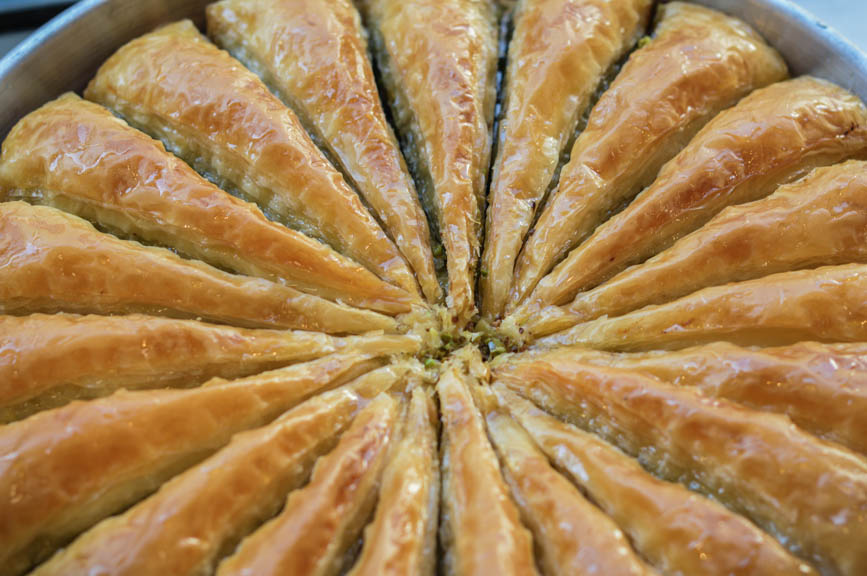
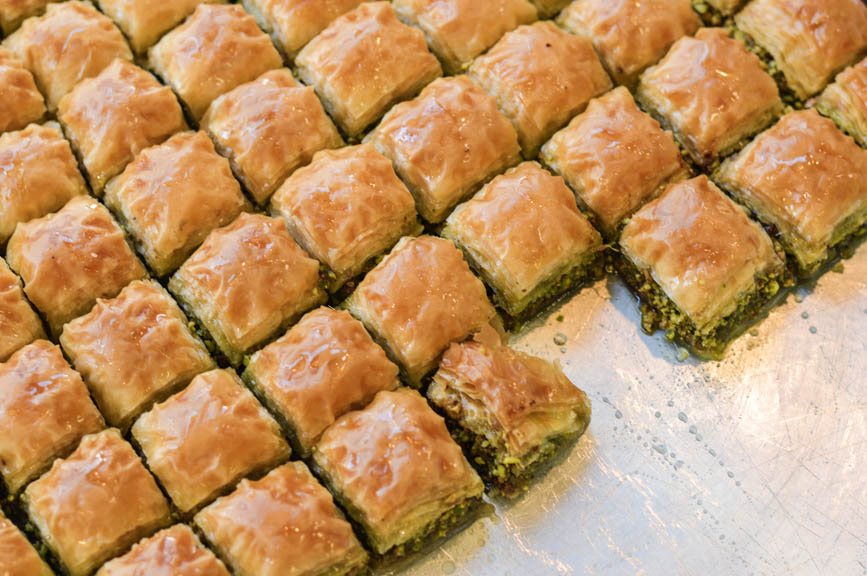
To survive in this town, you need to pause and let your stomach digest. This, is when you drink. Çay, liquorice sherbet or menengiç coffee. Turkey is a massive consumer of tea, yet surprisingly for the place which invented turkish coffee (debate on whether it is really turkish, greek, bosnian or armenian is for another day) it does not seem to consume much of it. The thick dense dark potion is not available in most places, instead being replaced by the more commonplace Nescafé…and definitely losing out to çay in terms of popularity. Gaziantep offers you a wonderful alternative, the smell of sweet nutty puffs from menengiç coffee brewing. The colour of toffee ice cream, a little cup of menengiç coffee hits your olfactory senses first, it manages to smell creamy. Rich from the fatty nature of the ground terebinth berry pits used to make it, it is soft and nurturing, if you are a fan of lattes, you will like this. Supposedly it is also high in vitamin E and unsaturated fatty acids, good for combatting all the food we have been eating!
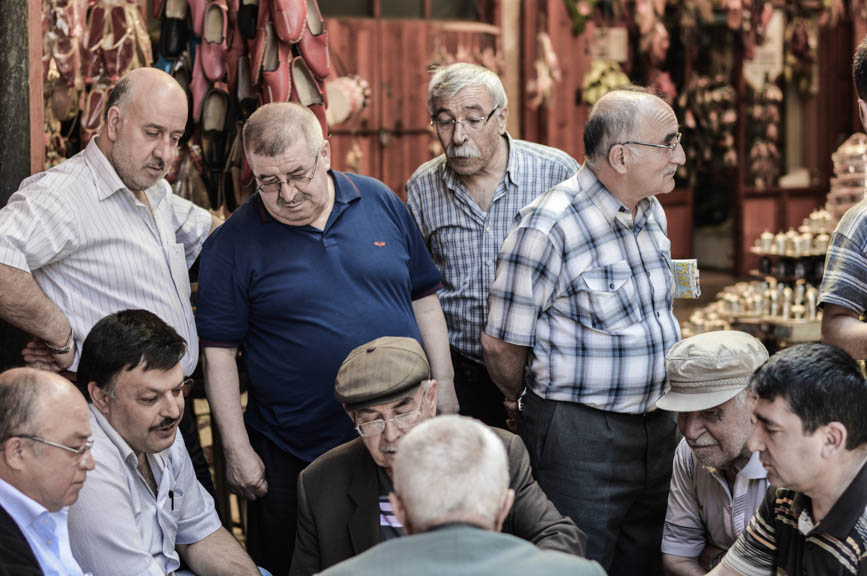
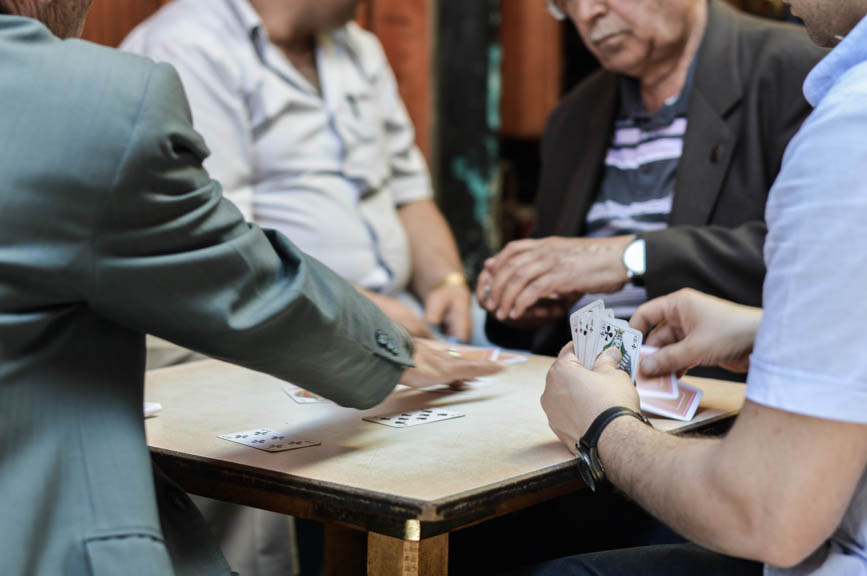
In between meals we continue our walk, stumbling into backstreet card games where we are invited to watch, with çay of course. 30 minutes later we are none the wiser, still trying to figure out the rules of the game beyond the fact that each player has four cards. Someone huffs off in a puff after losing while everybody laughs, there is a balance between taking the game in all seriousness and introducing themselves as Clint Eastwood.
After all the sweets, it was time for something savoury. More time in Gaziantep and I may become borderline diabetic. On our mission towards salt, we get stopped at a fırını (bakery) where fresh piping hot bread straight from the oven is tossed at us and my fingers singe from ripping it apart. The production line is fast and efficient, dough balls are carried out, formed into thin rounds, slid into the burning fire and out come new rounds, ready to be dusted off with a herb brush. This is also where we find the other side of Gaziantep, the first time we witness child labour, widespread and common, children are working as food messengers all over town. The issue of child labour deserves a post of its own, unfortunately we will continue to see the practice throughout our journey in the eastern part of the country…
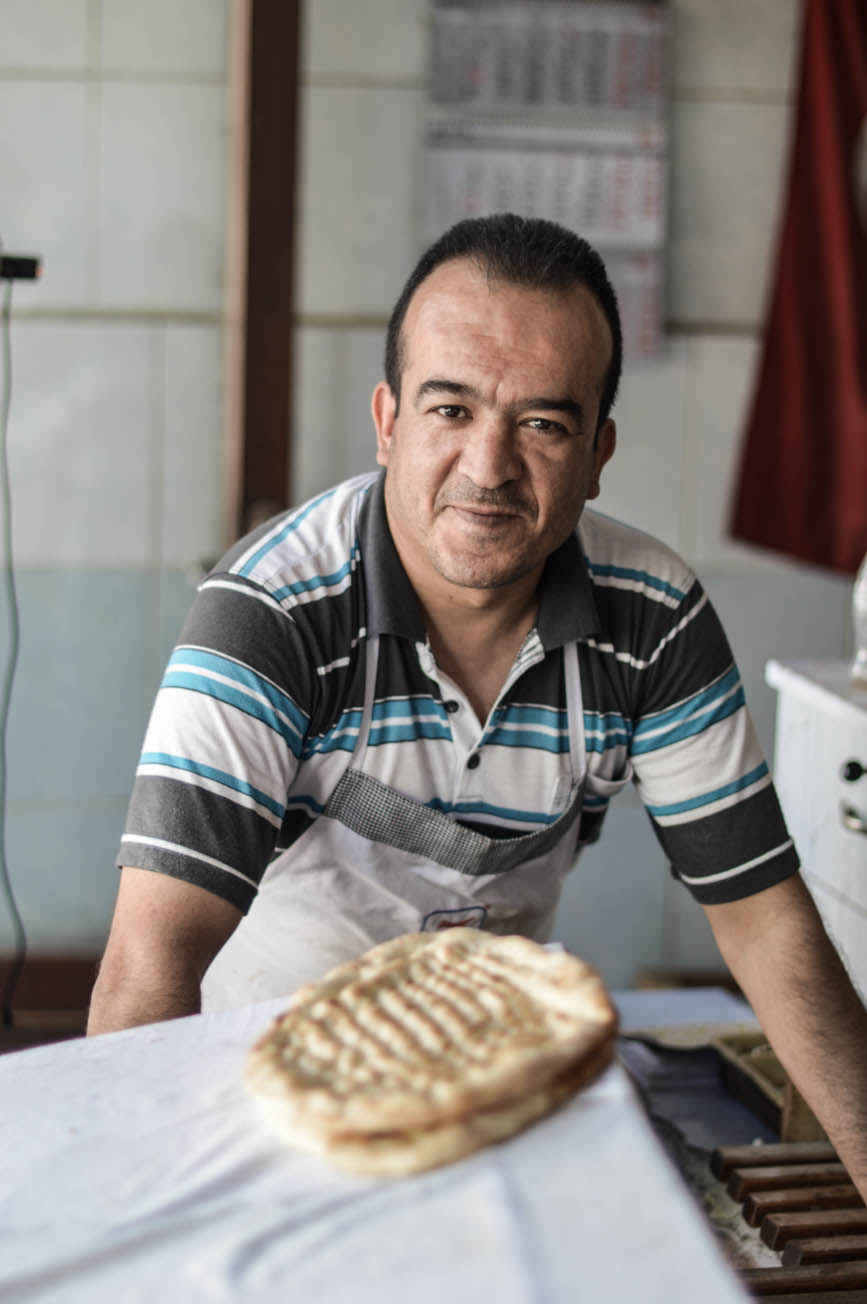
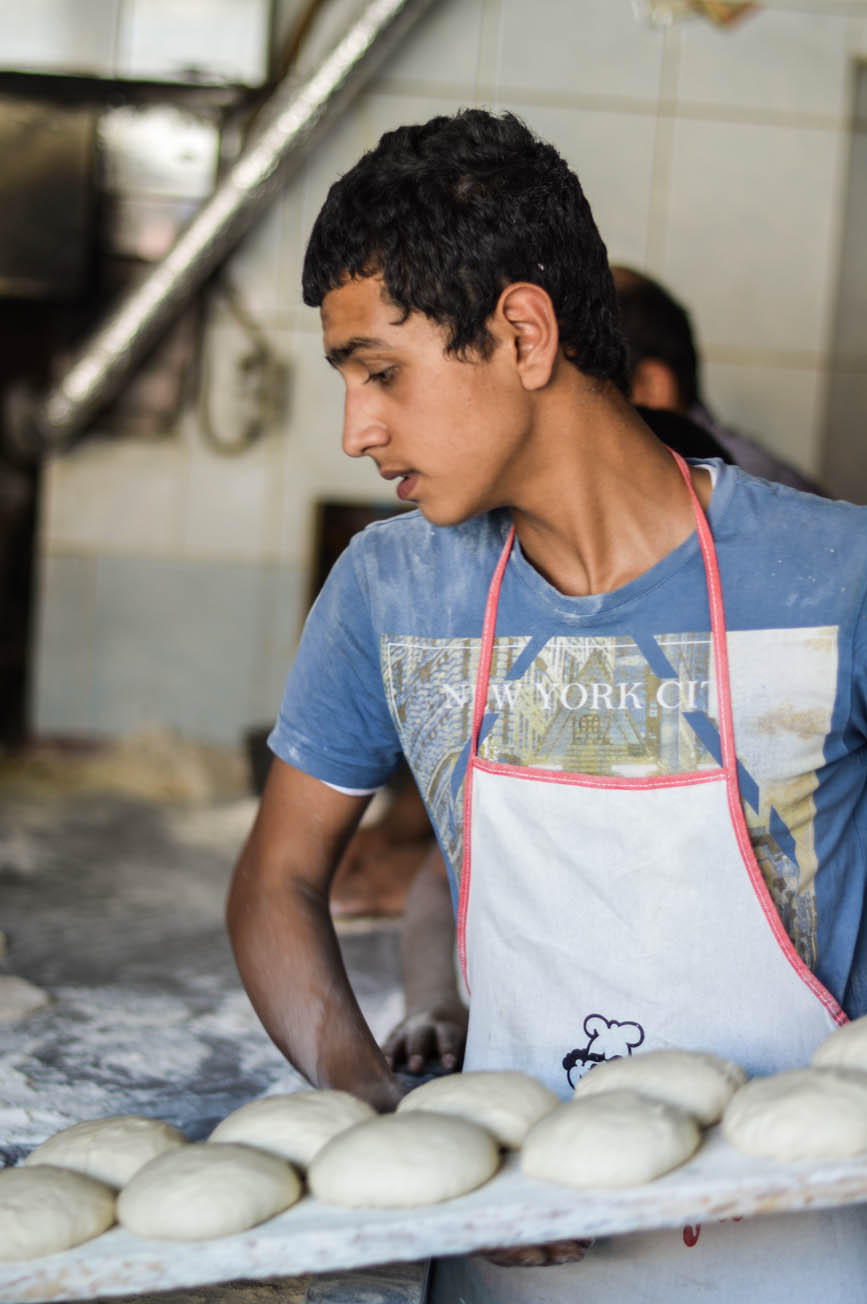
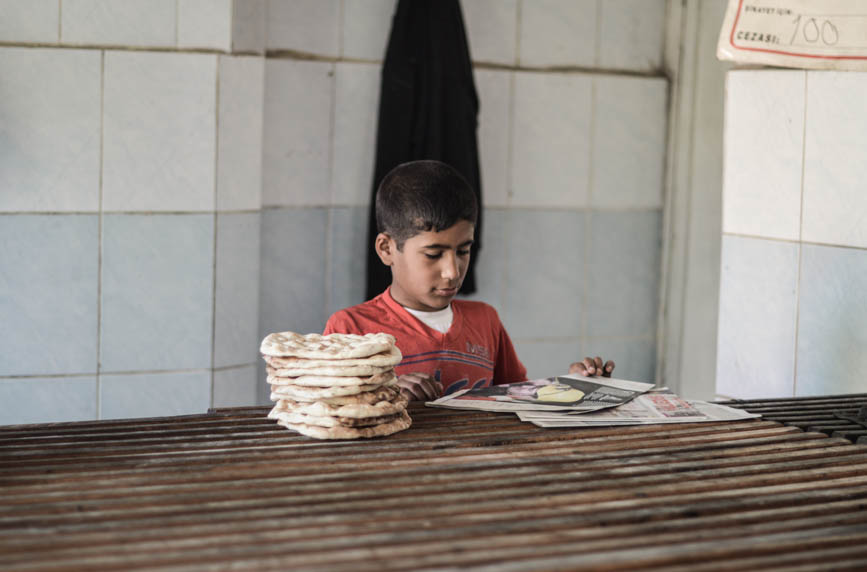
There is something magical being cooked up in the old town, at Metanet Lokantasi we discover beyran. Lokantasi are like the trattorias of Turkey, easy local food, usually hot, instant and prepared to order at half the price of fancier restaurants. Here they serve a breakfast and lunch favourite – lamb so tender it falls into shreds with strong notes of garlic and spice. Beyran is prepared by mixing the cooked lamb with rice then laddling over boiling garlicky lamb broth before heating the portion directly over flaming fire and serving it immediately. Oh please give me more. It is accompanied by lemon slices, more green chillies and a bowl of red chilli flakes. The meal would not be complete without a bowl of ayran, yoghurt and icy water mixed at the table – Gaziantep is having none of that prepackaged ayran business you see everywhere else.
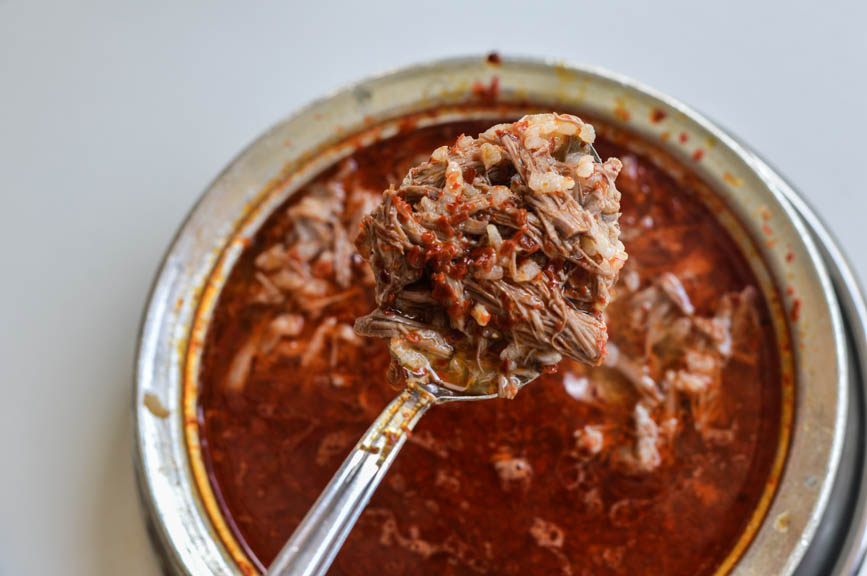
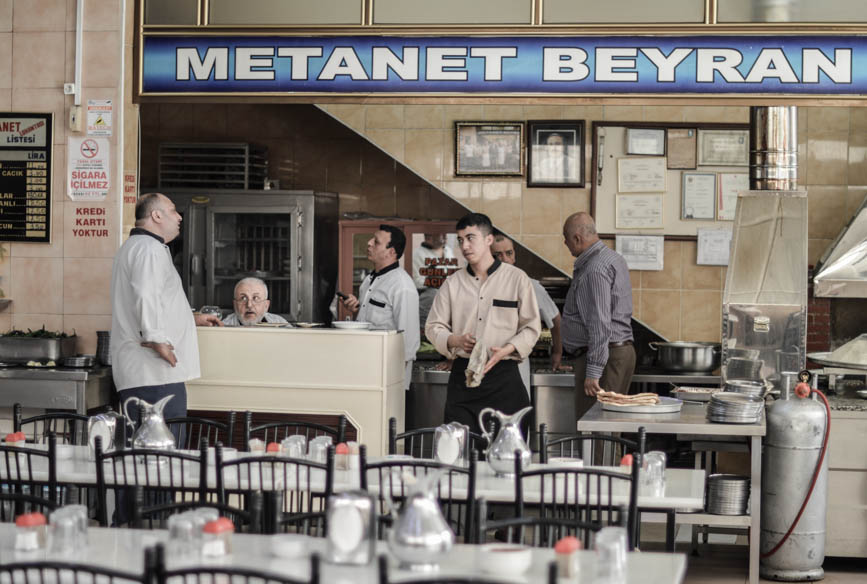
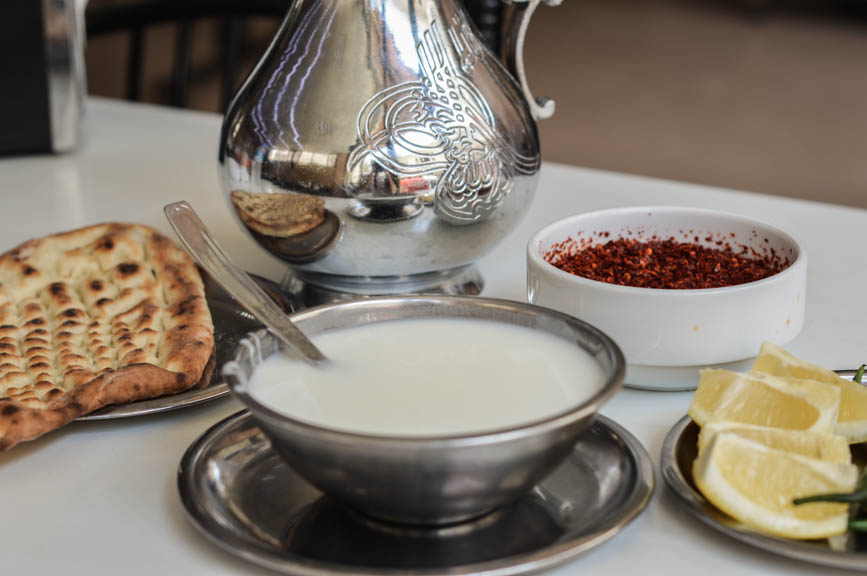
The days are getting hotter and Serbethane guys walk the streets with large copper containers on their backs, taps ready to release icy cold liquorice sherbet into plastic cups. Customers recognise their red and yellow uniform and eagerly rush forward for a serving of the herby black liquid.
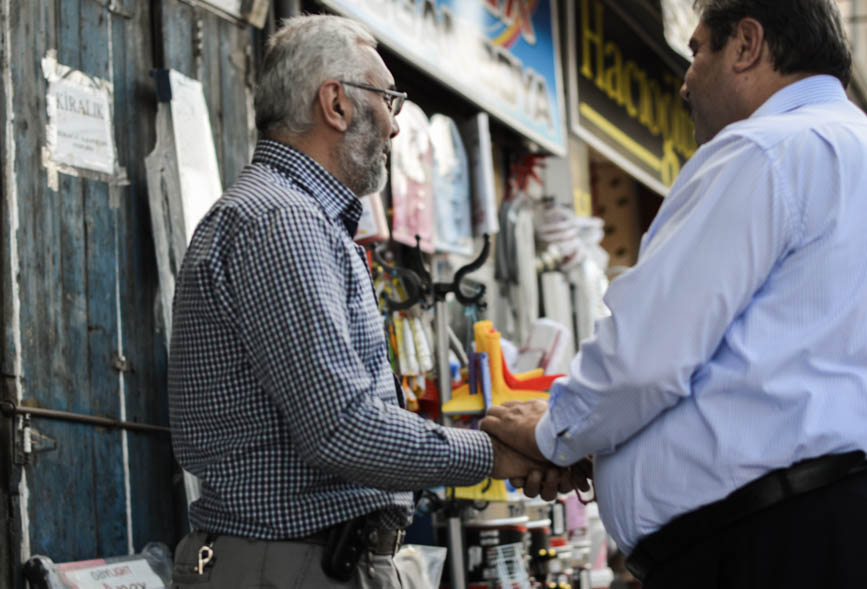
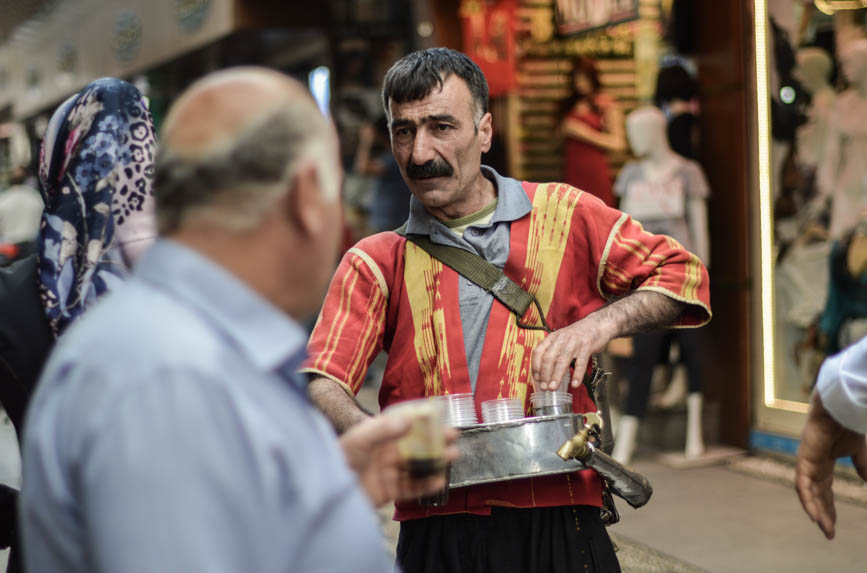
In the heat, we walk through the shaded darker alleys and discover the other side of the bazaar, artisans producing the copper artworks the city is famous for. Mini hammers clink into the shiny copper as designs are engraved into the curves of a flower vase, flames roar as handles are attached onto water jugs and cold water sizzles as the steaming hot black metal is plunged into a big bucket and emerges a shimmering pinkish brown. This city has not lost its craft as young and old continue the art of working their metal.
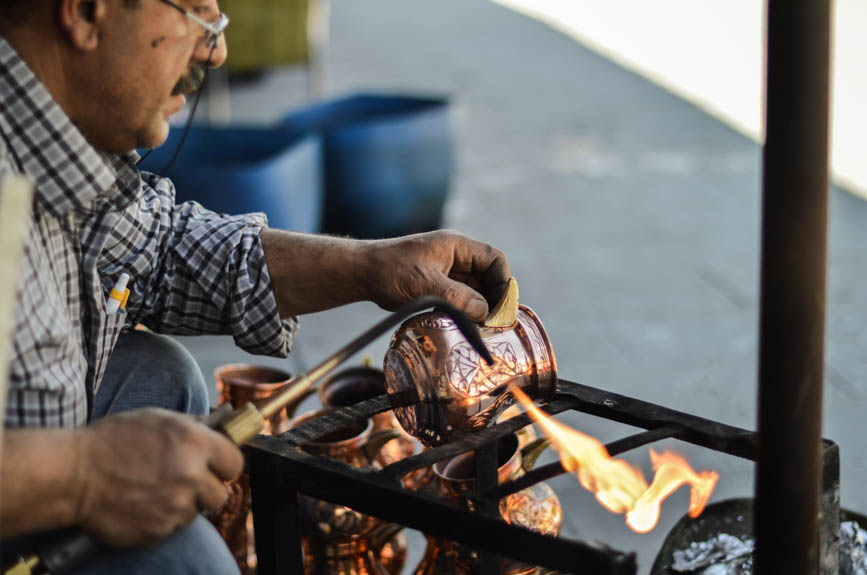
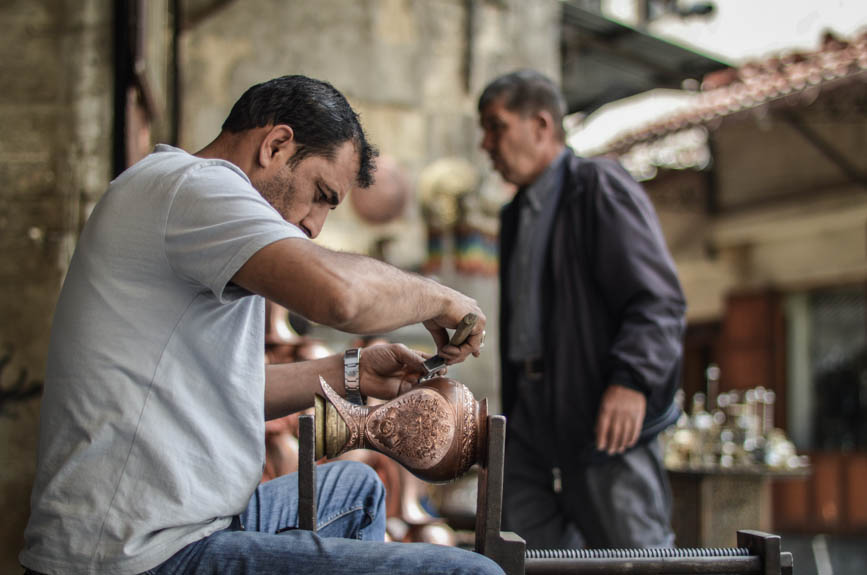
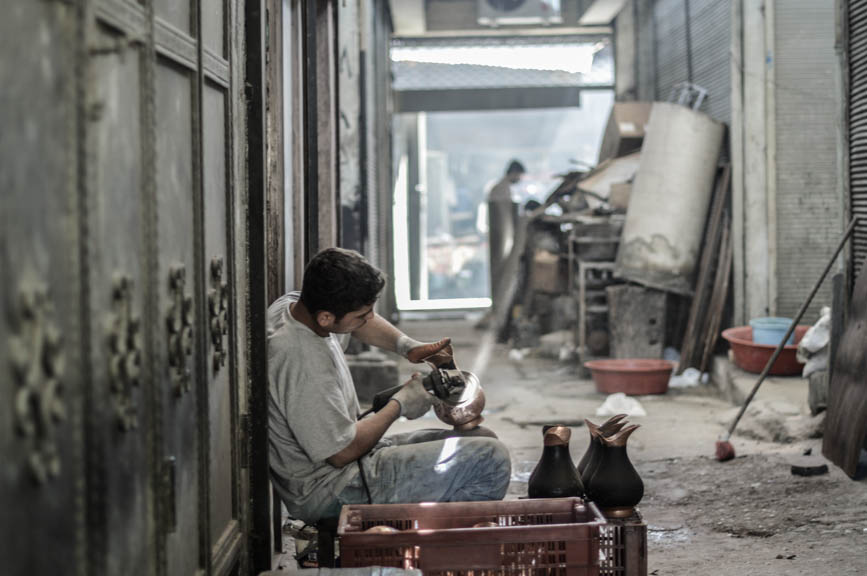
When you can eat no longer, there are two more surprises in town, Antep’s goodies are more than confined to the edible. Option one: you can learn more about Gaziantep’s food and great picnicking tradition – the Sahre, at the enlightening culinary museum. I left wishing I had time to join a local sahre or step back in time for an invitation to a fekke – an elaborate feast with an air of celebration, often served at long tables in big rooms, some of the original “shared tables” that are so popular with “hipster” communities nowadays. Or option two: the Zeugma Mosaic Museum.
The Zeugma Mosaic Museum is the biggest mosaic museum in the world, featuring mainly salvaged mosaics from the ancient city of Zeugma, it is incredibly beautiful and well worth a visit. Thought to have been founded by Alexander the Great’s army, the ancient city and its treasures were only discovered when plans for the new Birecik dam on the Euphrates river were made. Most of the mosaics are dated 4AD and would have been flooded by the construction, making it even more impressive that many pieces are so well-preserved.
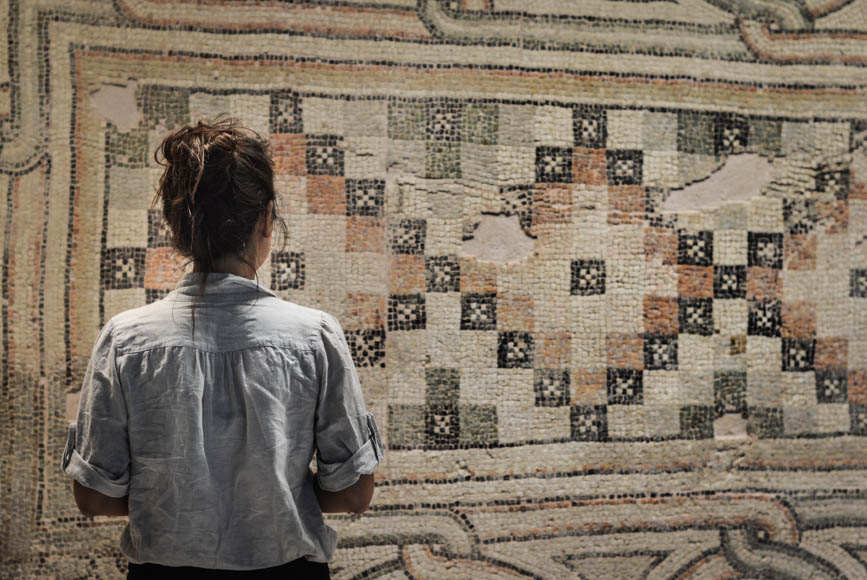
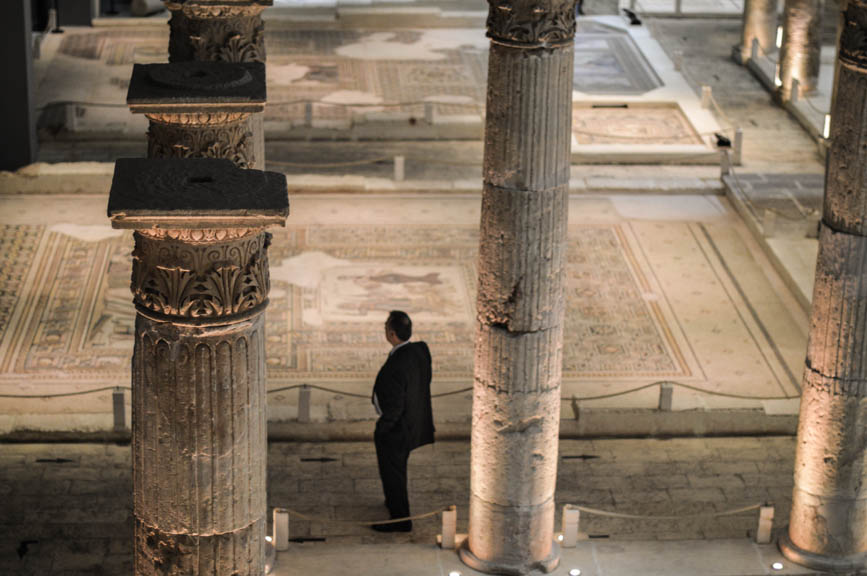
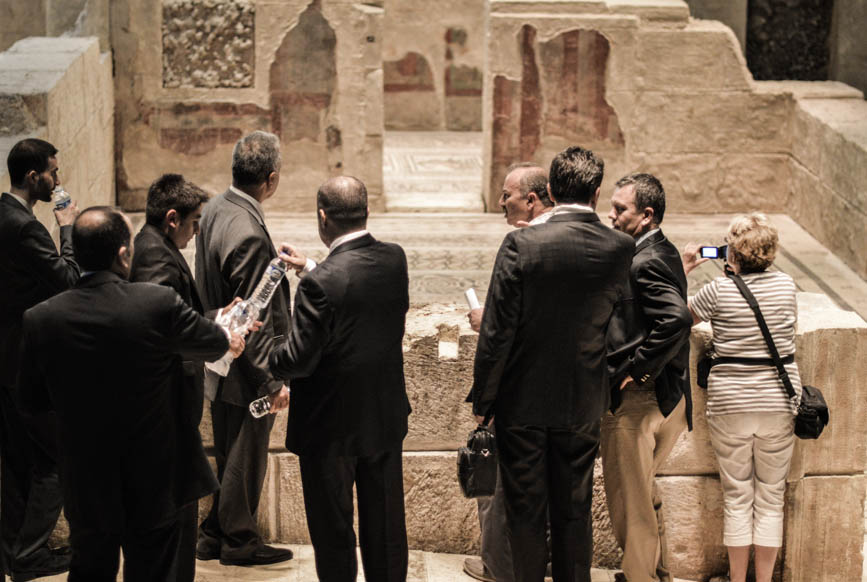
Some of them are incomplete due to looting and art theft, with many thieves often destroying faces and animal heads depicted on the mosaics, believing treasure to be buried beneath. There were dreamy pool mosaics, huge spa columns and my favourite piece – Metiochus and Parthenope. Famous for their legendary love for each other, they were torn apart and unified after years. The mosaic’s fate became life imitating art when the main figures were stolen by tomb robbers. The mosaic arrived at the museum labelled “Who knows where? In which country?” until photographs sent by Canadian archaeologist Sheila Campbell revealed that the stolen parts were in the Menil Collection in Houston, Texas. The missing parts were finally brought together in 2000 after years of being torn apart by traffickers and were united once again. I know, it tugged at my cheesy heartstrings.
We explored the rest of the museum with a large group of Arab business men who were most likely in town for the huge machine-produced carpet convention, one of Gaziantep’s leading non-food related industries. On the second floor of the museum is the mesmerising Gypsy Girl. Hidden away in a dark room, you are led through the dark corridor to an illuminated face. Much like the Mona Lisa in the Louvre, the Gypsy Girl is smaller than you expect and her gaze follows you from whichever angle you approach, the sad eyes looking straight into yours. Unlike the Mona Lisa, you get to see her all to yourself, without the 50 other tourists huddled around fighting for space.
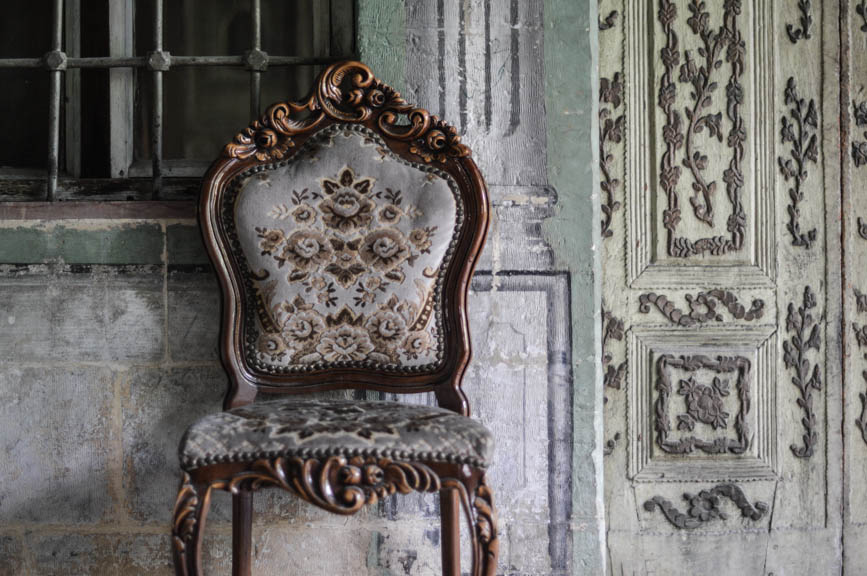
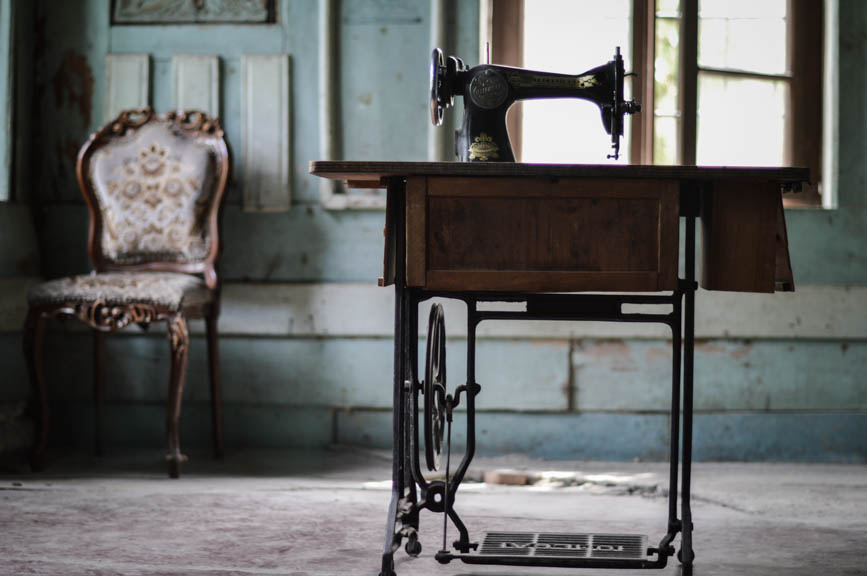
To round up our visit of this fascinating culinary city, we head back to the Papyrus Cafe for one last çay. This old Armenian courtyard villa has been shielding all along a magnificent remnant of its extravagant past on its upper floors. Walking up the stone steps covered in vine, there is an interior designer’s dream awaiting. Walls painted in aqua blue, turquoise and mint cream, flower engravings line the door columns and colourful frescoes pop from the dome-shaped ceilings. An old chair and a single sewing machine stand proudly in the empty abandoned spaces, just waiting for Vogue or Elle magazine to come shoot them for their next fashion spread. Gaziantep surprises us once again.
A city in love with its food and happy to share it. A complicated political past and a promising future. A place full of art where you least expect it.
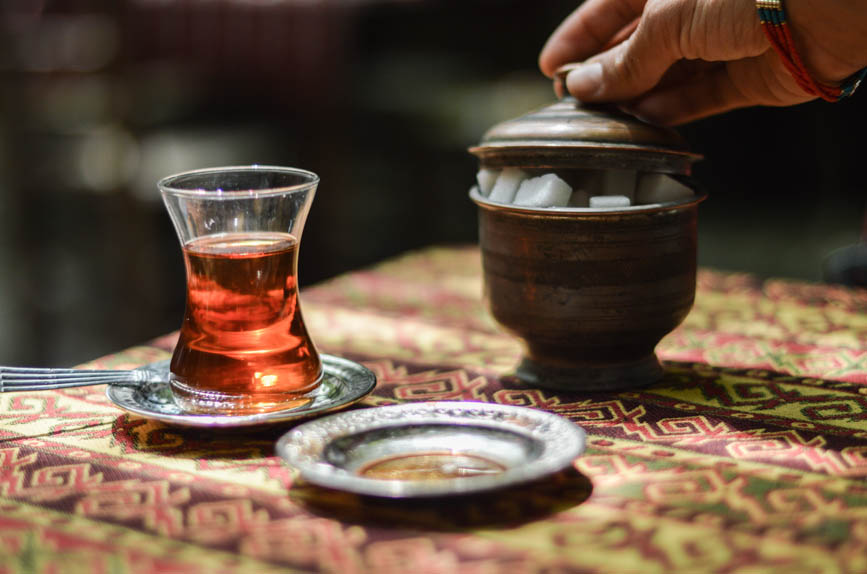
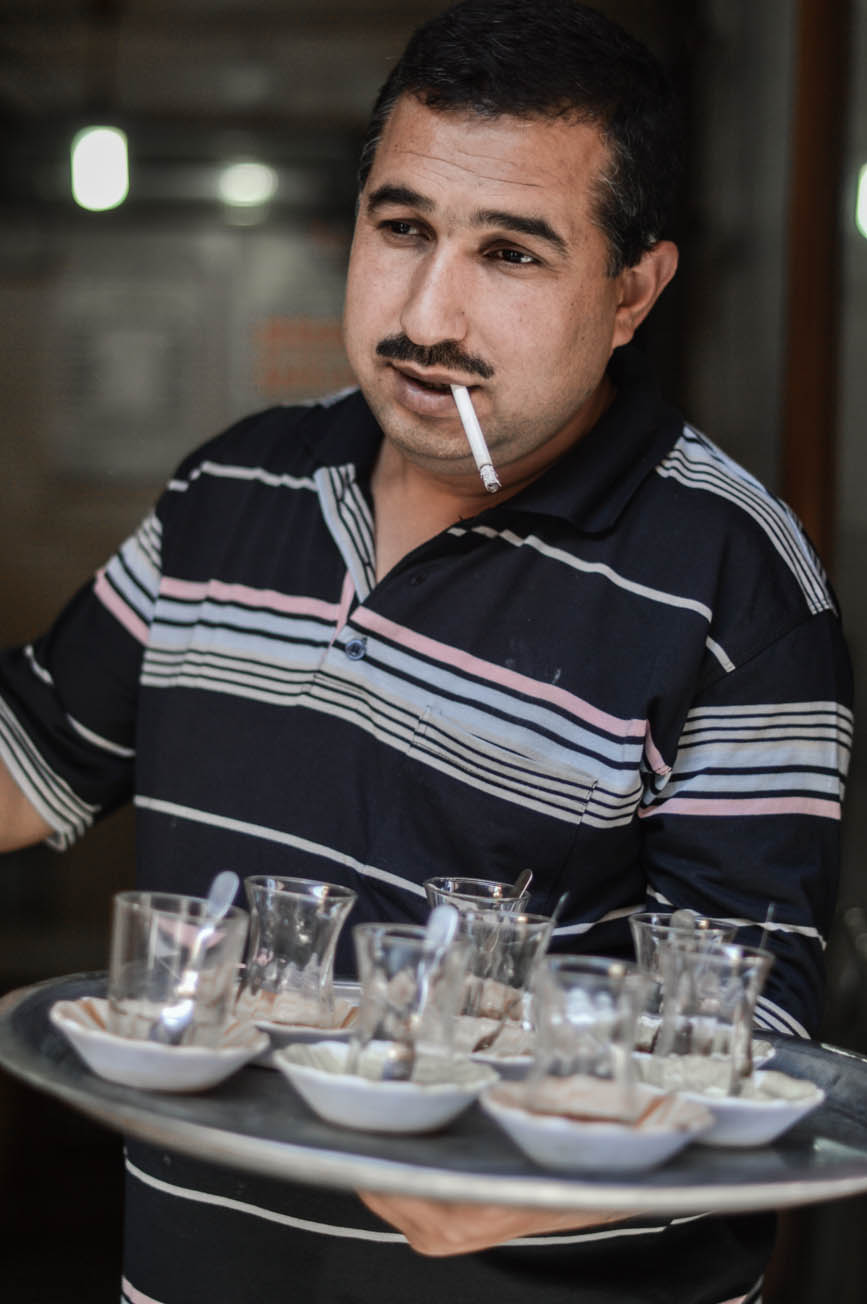
Gaziantep did I mention I love you?







1 Comment
tammy
June 6, 2014So very interesting read! Love the way you write! As usual,beautiful photos.